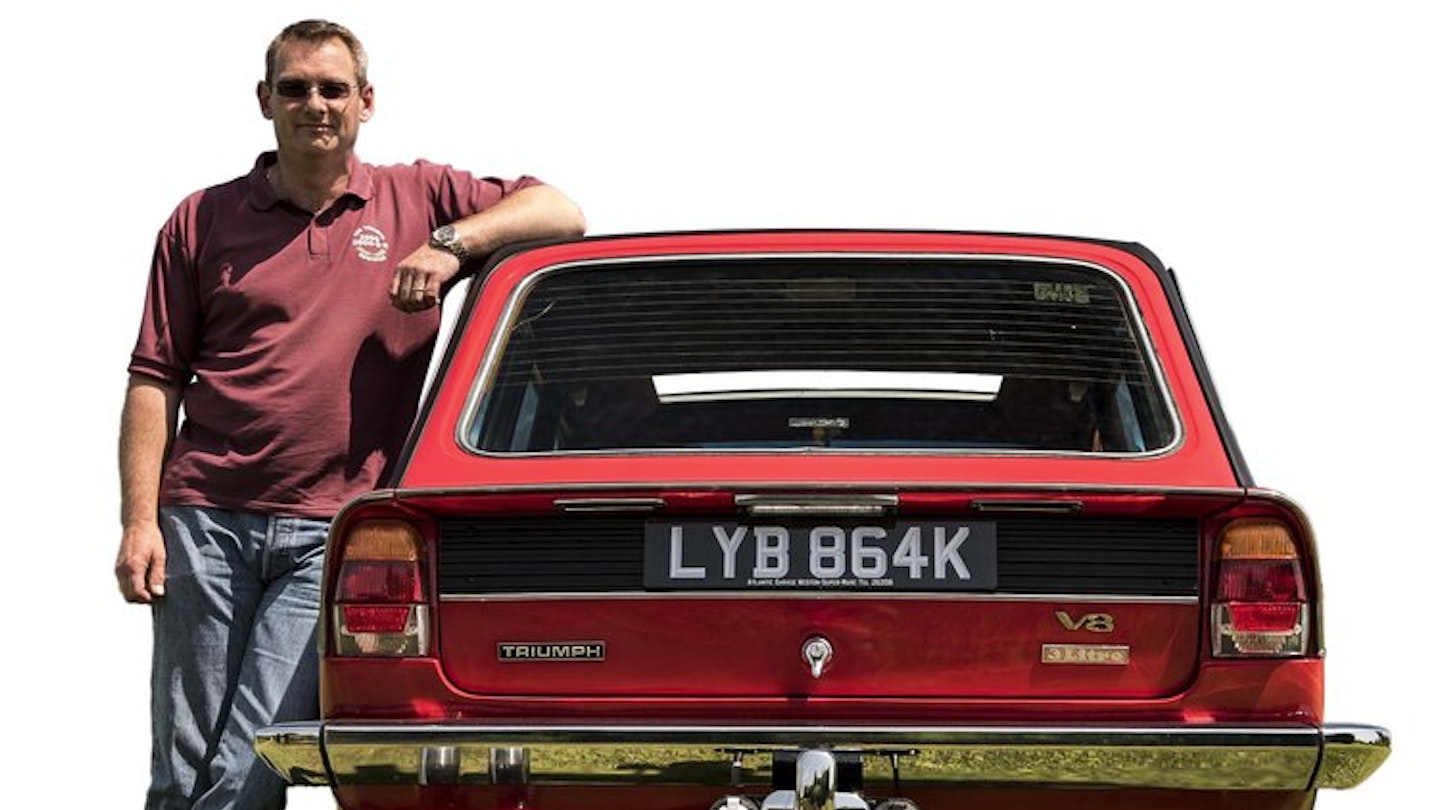Words: Matt George Pictures: Jonathan Jacob
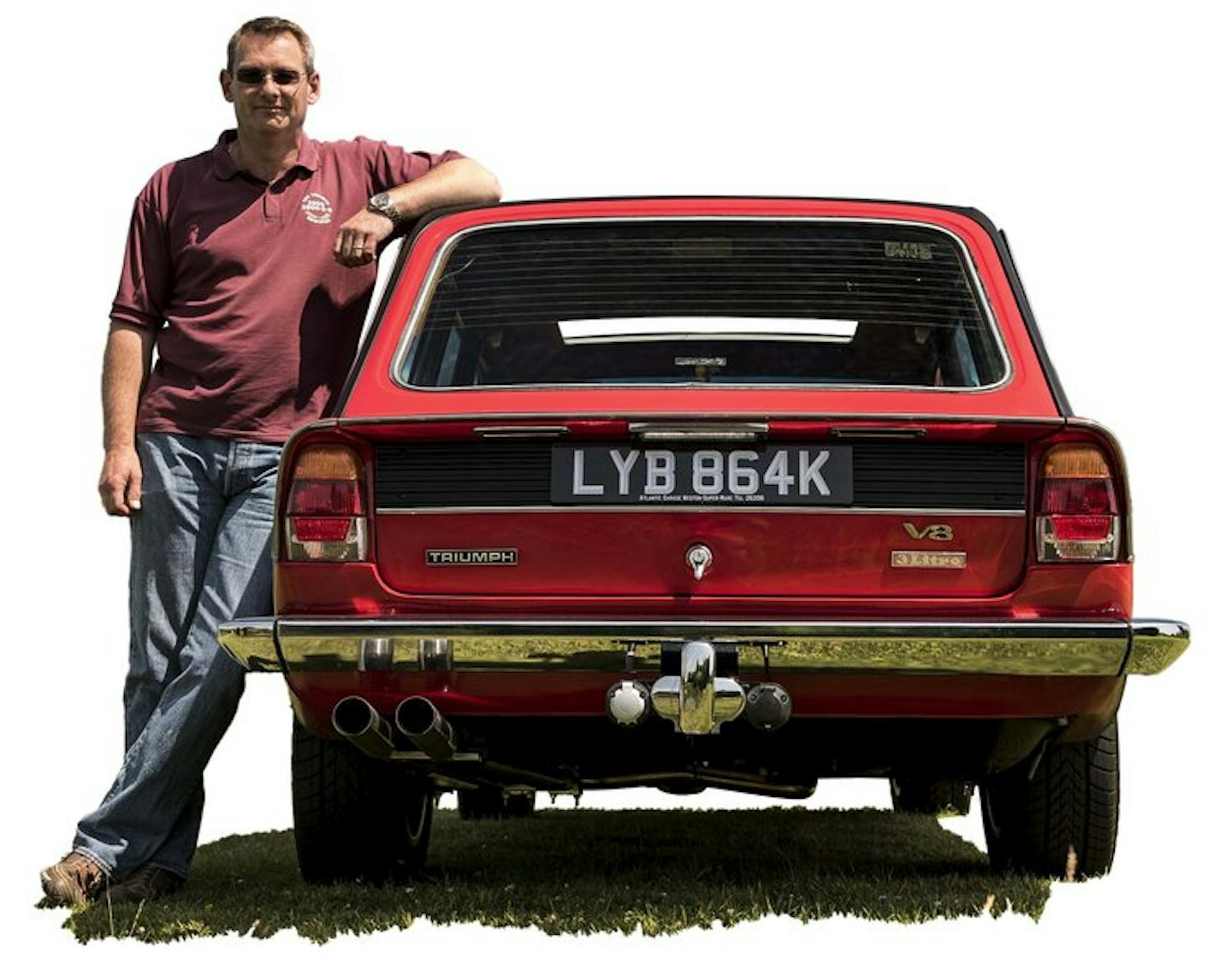
This gleaming Triumph is the culmination of over two decades of dreaming and scheming – Alan Chatterton went through scores of Triumphs before getting his hands on this special machine. ‘I bought my first decent Triumph in June 1992,’ recalls Alan. ‘It was a MkII 2500S in Tahiti Blue and I loved it. The previous owner let me have some copies of Six Appeal – the 2000/2500/2.5 Register magazine – and I read them from cover to cover in just one night!’
Then came his Eureka moment. ‘In those magazines I saw a reprint of an article that appeared in the November 1972 issue of Motor and it was about DEL 33, a Stag Estate created by Ian ‘Del’ Lines. I vowed one day I’d have one. Even if I had to build a replica… after all, there was no chance of finding a real one, was there?’ Fast-forward to 2009, and Alan had decided that 17 years was long enough to wait. He was ready to build his dream car.
‘Having been in and around the only two other surviving ‘Lines’ cars – 2000/2.5/2500 Register President Andy Roberts’ Stag saloon ‘Janey’ and TNH 10, Andy’s Stag estate that he now owns again and is also restoring – I knew that I still wanted one. The first stage was to part with my beloved yellow 2500S. Two estates just didn’t seem right, while space and money would be needed for the project I had in mind.’
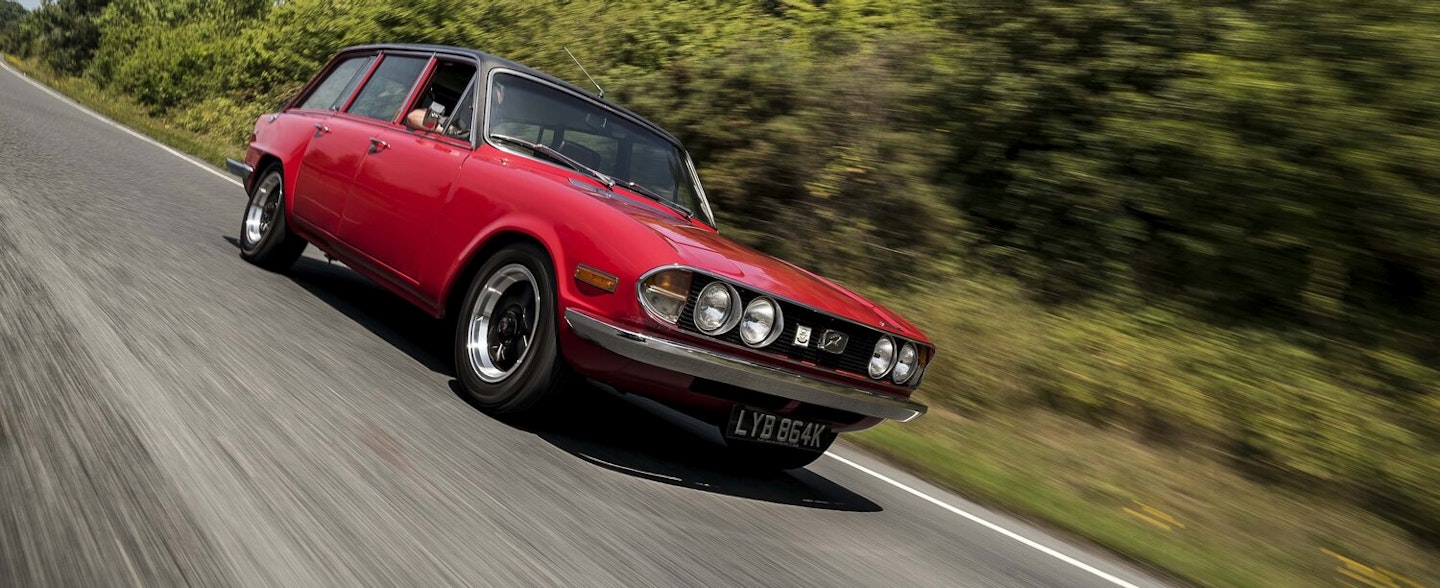
THE SEARCH BEGINS
The hunt was on for a decent MkII estate bodyshell to convert to ‘Lines’ specification. ‘That was until Andy persuaded me it would be better to restore an original Lines car rather than build a replica.’ Great idea, but where do you find such a beast? ‘A couple of months later, I got an email from Andy. He’d tracked down Mike Collins, current owner of DEL33… and would I like to go and collect it? I had to sit down.’ After several chats on the phone with Mike, a deal was agreed and the car belonged to Alan. There were some issues, however, as he recalls: ‘Mike previously had the car shipped to Spain, to Del Lines himself, for restoration. Lines removed the engine, gearbox, exhaust and wheels, and then promptly did a runner, so the car was incomplete. It was also no longer DEL 33, instead registered LYB 864K, but had all the paperwork to verify it was the right car.’

Oh, did we I mention that Mike lived in Roggliswil, Switzerland? Sadly there isn’t space here to recount the full extent of Alan’s adventurous trip into Europe to collect the car, but by December 2009 it was safely in his garage. But what exactly had he bought? Despite being laid up for years, the car was in better condition than anticipated. The stripdown was fiddly – removing all the glass without breaking it being a particularly tricky process – and ended up taking a couple of months, but finally Alan had a bare shell to work with. While generally in good shape, it became clear there was some rot lurking within, especially in the sills where significant work was required.
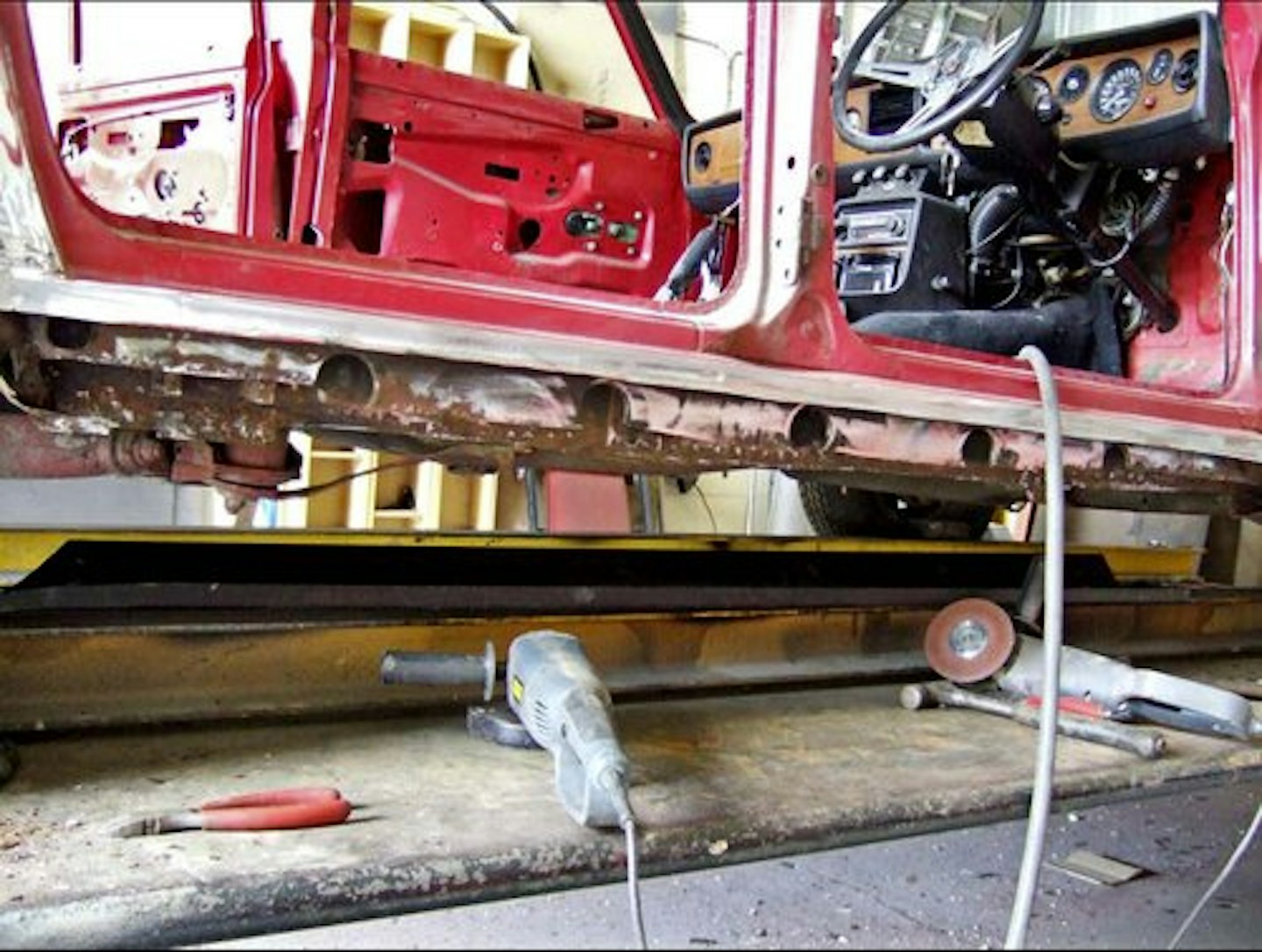
Alan explains: ‘My welding skills aren’t up to scratch, and this wasn’t the car to learn on! I was going to ship it off to a bodyshop, get some sills welded on, knock out the dents and paint it red.’ But the car deserved better. ‘My friend Brian Chrimes runs his own business restoring Alvis cars. He offered to do the work for me, between jobs to keep costs down. My wife Sam persuaded me to accept and do it once, but do it right.’
The car went to the bodyshop in April 2010. The inner sills had rotted out at the bottom, the offside being the worst, while one front arch was badly crushed. ‘We were also worried about what was under the vinyl roof,’ recalls Alan, ‘but happily it was OK.’ The rear arches were full of filler. Del Lines widened them to fit larger alloy wheels, but his method had been previously unknown. Alan discovered that the wings were cut where they join the rear valance and by the edge of the rear pillar. The inners were cut behind the arch lip. ‘Pulled out, plated over and badly filled! Behind this mass of filler was rot. Lots of it.’ Both sides were rebuilt properly with steel and lead.
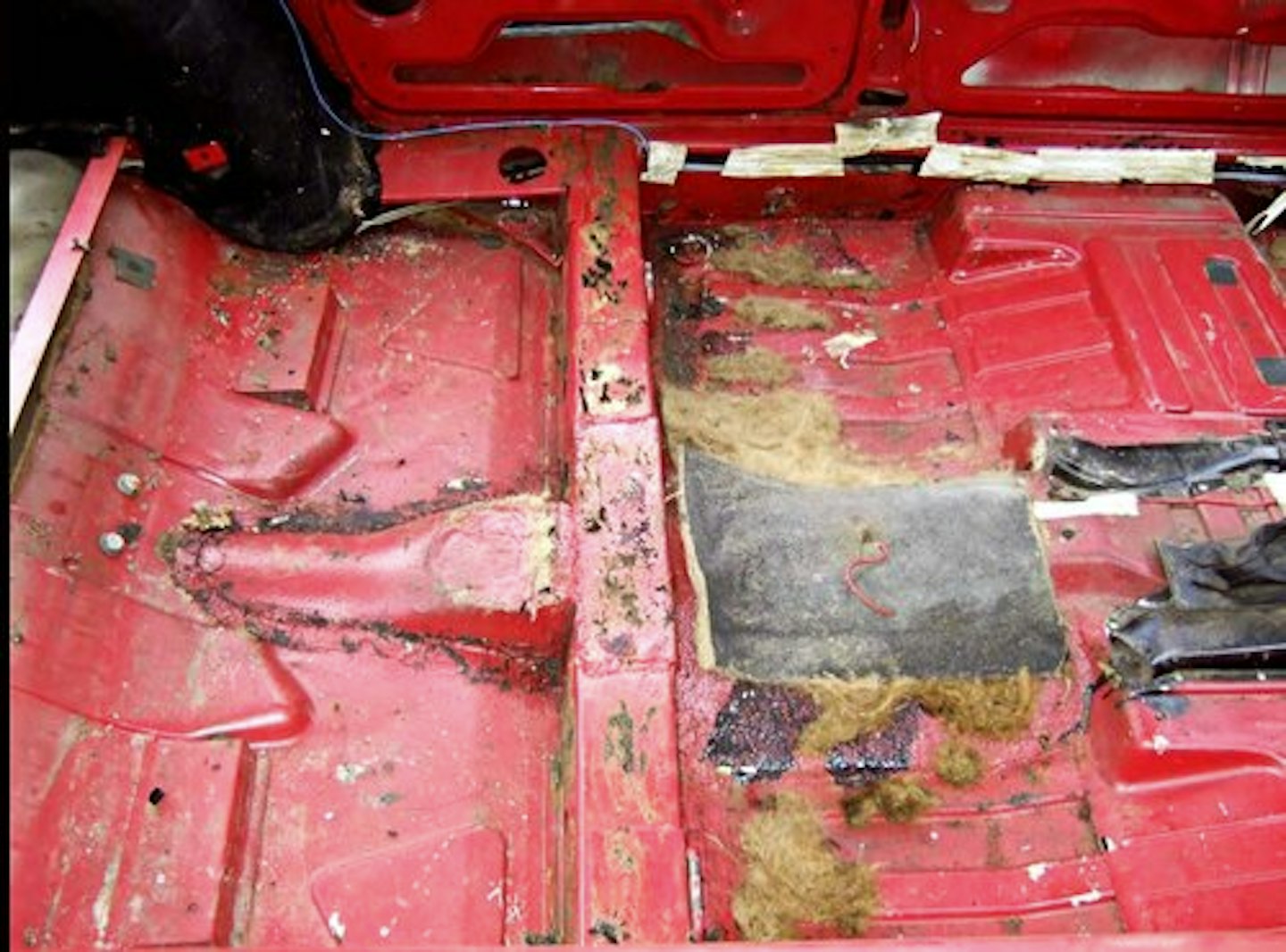
CRUSTY SILLS
When faced with the crusty sills, Alan chose to repair rather than replace the inner sill strengtheners, using brackets made up to reinforce them: ‘This makes them strong, but allows access to get anti-corrosion protection into both sides of the box section.’ As work progressed, Alan routinely visited Brian’s workshop along with his friend Bradley Lourens, a regular Triumph co-conspirator. The pair replaced the door pins and hung the doors, taking time to ensure the shut gaps were perfect.
‘The only issue was with the replacement passenger’s side rear door. We bolted it on and it was totally the wrong shape and size. Not enough metal at the bottom, too much at the top. As the original door fitted well, with just the bottom three inches of the skin needing repairing, that’s what we did.’ The sunroof was next. ‘It’s an electric, steel sliding Helandia sunroof that was fitted by Bristol Coachworks. We were very concerned about this as the roof swage lines had been removed, particularly given the previous bodges we’d found. Also, the electrics hadn’t been tested. All we knew was that it didn’t sit shut properly, but didn’t leak either. We found the power feed for the roof and hooked it up to a slave battery, held our breath and pushed the switch… with a gentle hum of the motor it slid open.’
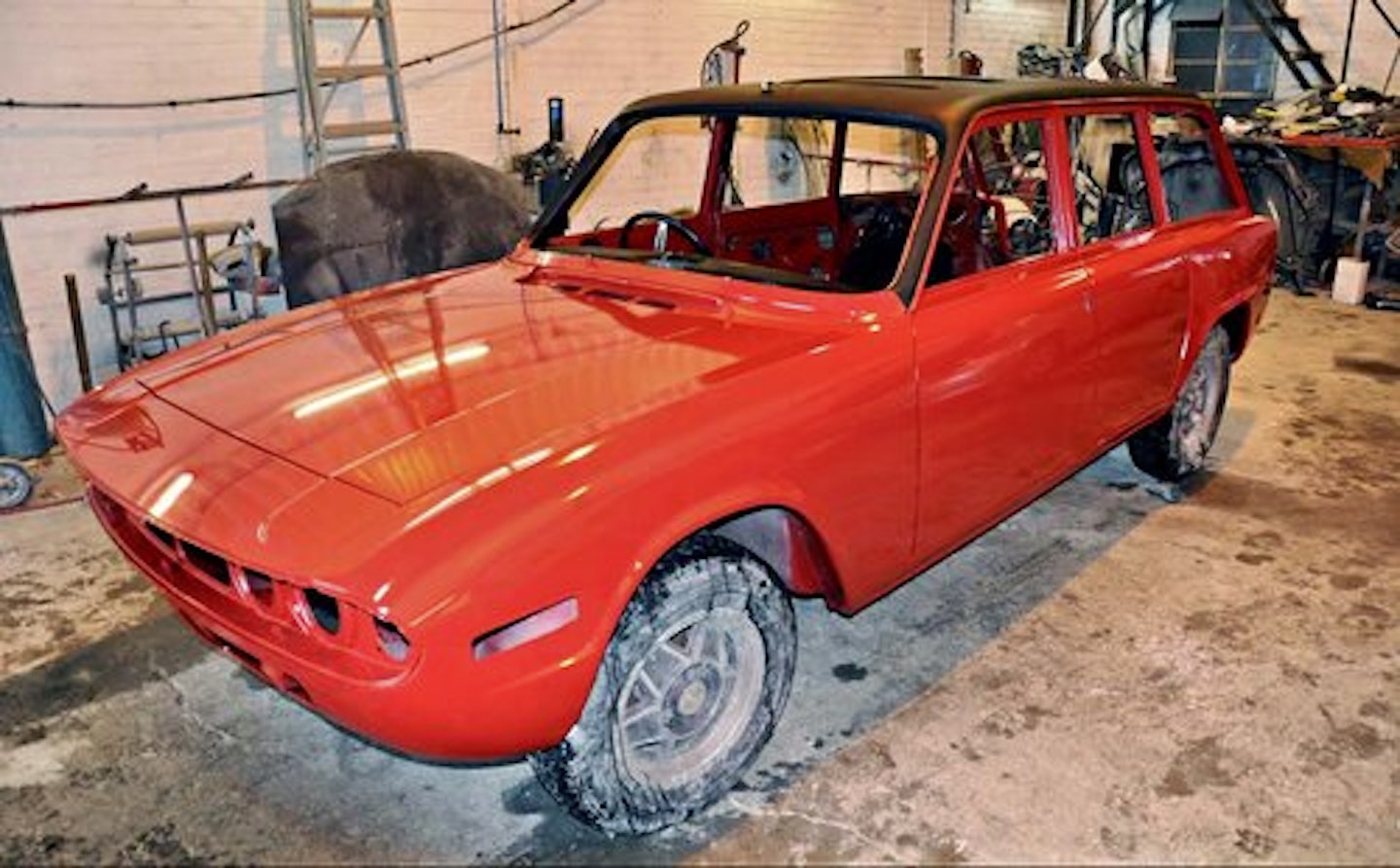
With the roof open, the rest of the vinyl roof and the tired black headlining could be removed, revealing some interesting fitment details. ‘We were hoping to be able to drop the whole ‘cassette’ out and work on it, only to find that it was actually bonded to the roof and the metal bent around it. After much head scratching, we eventually found hidden screws that allow the whole sliding section to be removed.’ The top half was sent away to be trimmed in vinyl, with the bottom half being done to match the headlining.
While the body was away, Andy Roberts was busy rebuilding the Stag engine Alan sourced to replace the missing original unit. ‘I’m indebted to Andy here, he did a great job of building the engine to the spec used by the tuner Richard Longman originally, as per the unit in his own car.’ But there was other work to be done before firing the motor up.

Once the welding was done, it was time for the paintwork. Although it looked okay, there were lots of microblisters, so Alan decided to take the car back to bare metal to make sure there were no nasties under the old paint. Brian Chrimes did all the preparation work and laid the paint on himself, and a fine job he did, too. The work was completed in December 2010.
With the shell back in his garage, Alan could strip the running gear, starting with the front suspension. ‘That should take a few hours – how wrong I was! Every bolt was rusty, seized or rounded off. It fought me all the way! With the hubs and spiders stripped, I cleaned them up with a rotary wire brush, then a few coats of smooth Hammerite later, they were as good as new.’ The rest of the suspension, including the front crossmember, was sent away to be powder coated. Upon their return, Alan built up the front struts with new top bearings, shock absorbers and gaiters, fitting them into freshly powder coated strut bodies, cups and springs. The original brakes were then replaced by Stag versions, complete with larger diameter discs and drums.

NEARLY THERE
Progress was stop-start, but by 2012 the project was moving forward. In Reading, Andy Roberts was making progress on the engine, with the block and crank having returned from the machine shop. In Redditch Alan had started fitting some external trim, front and rear lamp units and the Stag side repeaters in the front wings. He also began to work on the interior refit, building up the doors with trim, cappings and handles, but the trickiest task was the rubber seals: ‘It’s a horrible job, without doubt the worst thing

I had to do on the car, requiring breaks every ten minutes as my hands kept cramping up.’ The glass went in next, along with the front carpet sections and newly-trimmed Recaro seats. With the grille and headlamps slotted into place, suddenly it was beginning to look like an actual car again. It was in this part-finished state that the car was displayed on the 2000/2.5/2500 Register stand at the 2012 NEC Classic Motor Show in Birmingham.
Putting the family home up for sale then held the project up, meaning it was July 2013 before Alan could crack on with things again. He’d found a NOS tailgate trim panel, but it was the wrong colour. No problem – one diligent application of black vinyl paint later, the issue was solved. After struggling with poorly-fitting reproduction carpets, Alan was kindly given a NOS main section by club member Mike Weaver to go with the NOS footwell carpets he already had.
This allowed him to make a neat job of carpeting the passenger compartment. Next was the rear wheelarches. ‘The original carpet is formed into a curve, whereas the repro version is a flat piece. When I stripped the car the rear arch carpets were in good condition, but faded from black to a light brown.’ Knowing how bad the repro stuff is and not wanting to tear the originals, Alan left them in situ and masked them up during the whole painting process. ‘Once cleaned up they were still as good as I thought. So, a couple of light passes with a spray-on carpet dye, and they were good to go.’
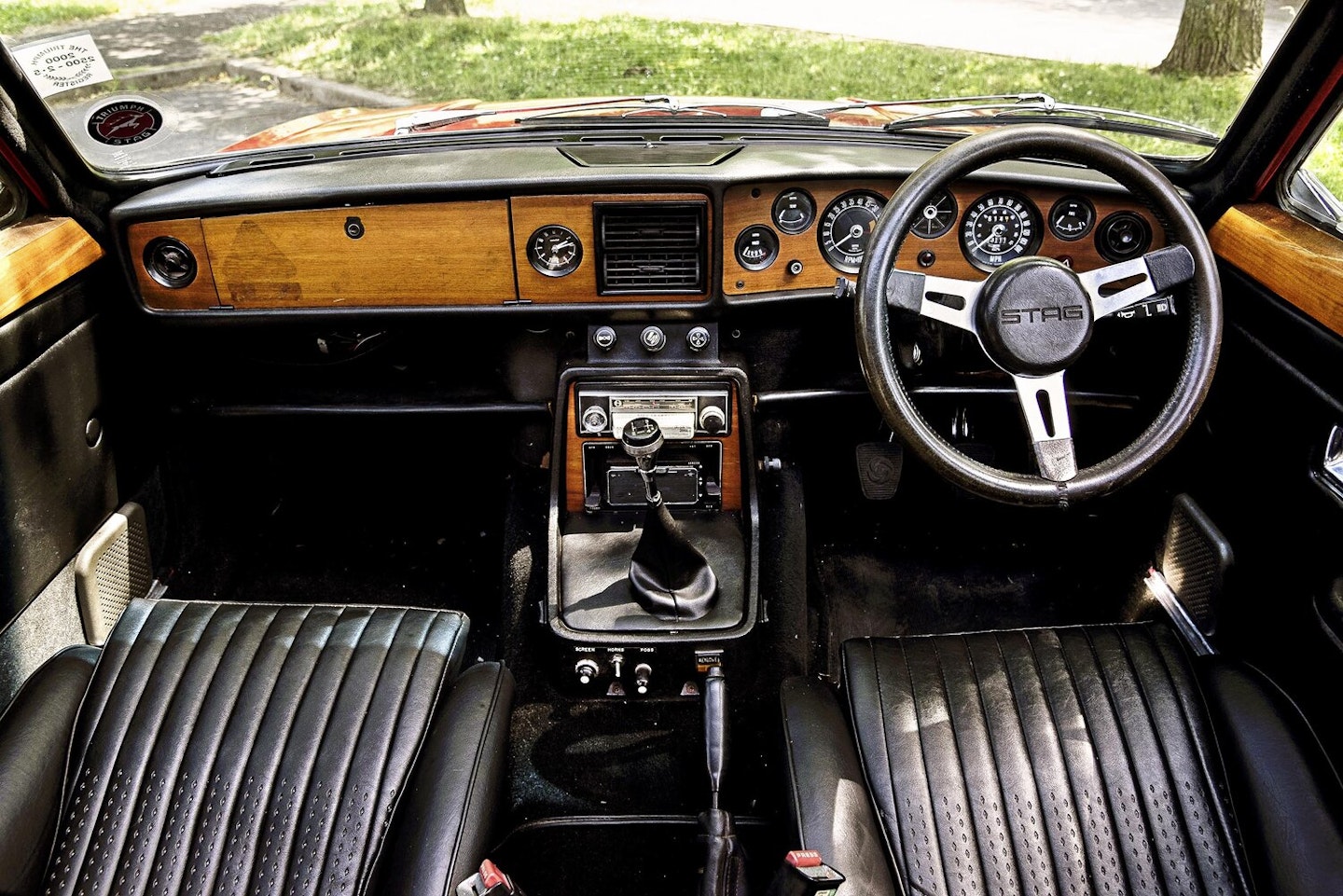
The carpet on the rear seat back was also replaced, as was the boot board and tank cover, leaving Alan to reflect on what he’d achieved: ‘I was so pleased with how it all looked. I’m sure a pro trimmer could have done a better job, and much quicker, but the satisfaction of doing it myself was worth it.
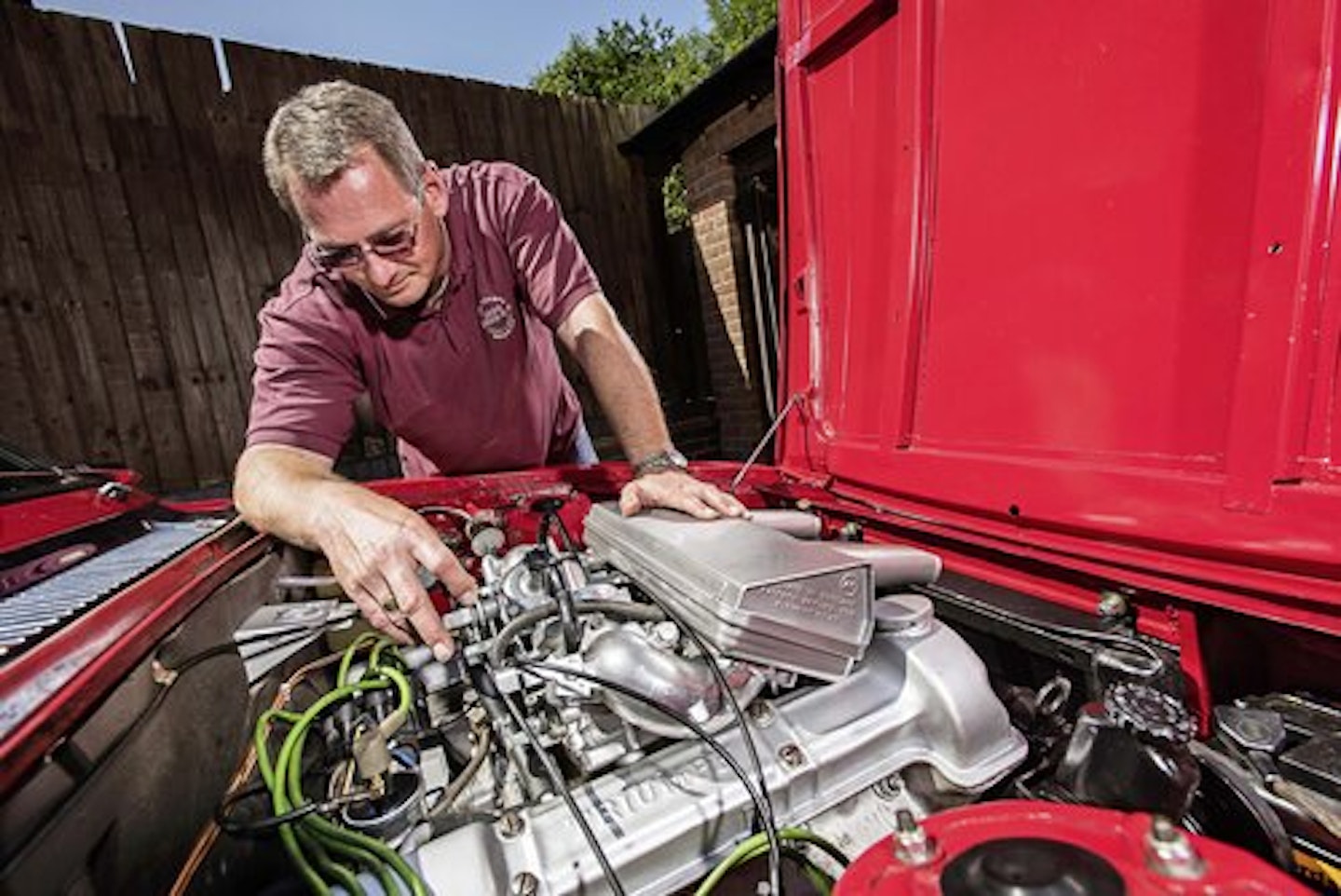
That protracted house move got in the way again at this point, meaning it was September 2014 before Alan could finally get on with the biggest job left to do – fitting the Stag V8 engine. ‘After several false starts due to component failures and engineering failures, it was at last time for the engine,’ recalls Alan, ‘and I couldn’t wait.’
Andy Roberts brought the finished engine up and Bradley also came to help yet again. ‘It was a long day of fiddling and swearing, but between the three of us, it was finally in place. Hooray!’ Having owned the car for over five years, Alan gingerly took it for an MoT in May 2015. A quick headlamp alignment later and the tester proclaimed that all was well. There was only thing left to do: ‘I always said the last job would be to fit the Stag badges to the rear wings, and when I did that, I knew it would be done.’
The car was finished in time for it’s live debut at the 2000/2.5/2500 Register National Weekend in Ashbourne in June 2015, while the engine was still being run in. ‘It wasn’t quite ready to tow the caravan,’ says Alan, ‘but it was there. That’s all that matters.’
